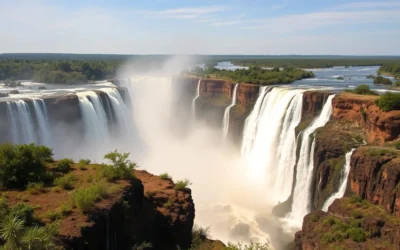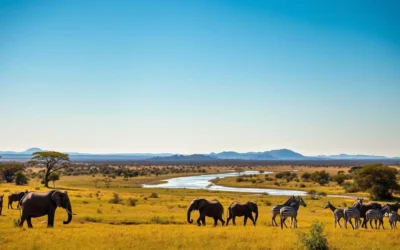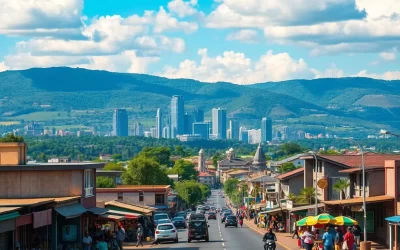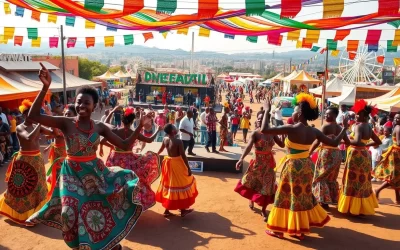✓ Accommodations ✓ Flights ✓ Rental Cars ✓ Tours & Activities
To make the most of your travel experience, it’s crucial to know when to visit. Zimbabwe’s climate varies significantly across the year, impacting wildlife viewing opportunities and the overall experience.
The country’s three main seasons – the cool dry time, hot dry season, and rainy season – each offer unique landscape appearances and activity options. Whether you’re looking for prime game viewing, lush landscapes, or a balance of experiences, understanding these seasonal variations is key.
By choosing the right time to visit, you can enhance your trip to this beautiful country, ensuring that your travel goals are met, whether that’s safari experiences, viewing Victoria Falls, or enjoying bird watching without the crowds.
Understanding Zimbabwe’s Climate Patterns
As you plan your trip to Zimbabwe, understanding the country’s climate patterns is crucial for a memorable experience. Zimbabwe’s climate is diverse, with significant variations across different regions and seasons.
Three Distinct Seasons
Zimbabwe’s climate follows three distinct seasonal patterns that shape the landscape and wildlife behavior throughout the year. The cool dry season (May-August) features comfortable daytime temperatures between 70-80°F, with significantly cooler nights that may require warm clothing, especially on early morning game drives. The hot dry season (September-mid-November) brings intense heat with temperatures sometimes reaching 104°F, creating challenging conditions but exceptional wildlife viewing as animals concentrate around remaining water sources.
The rainy season (mid-November-April) transforms the landscape into vibrant green hues with temperatures ranging from 77-85°F, offering excellent bird watching opportunities and lush scenery.
Regional Weather Variations
Regional variations significantly impact your experience in Zimbabwe. The eastern highlands typically receive more rainfall than western regions like Hwange. Zimbabwe’s lower-lying areas, such as Mana Pools, can become extremely hot during October, while higher elevation areas maintain more moderate temperatures.
| Season | Months | Characteristics |
|---|---|---|
| Cool Dry Season | May-August | Comfortable daytime temperatures, cooler nights |
| Hot Dry Season | September-mid-November | Intense heat, exceptional wildlife viewing |
| Rainy Season | mid-November-April | Lush scenery, excellent bird watching |
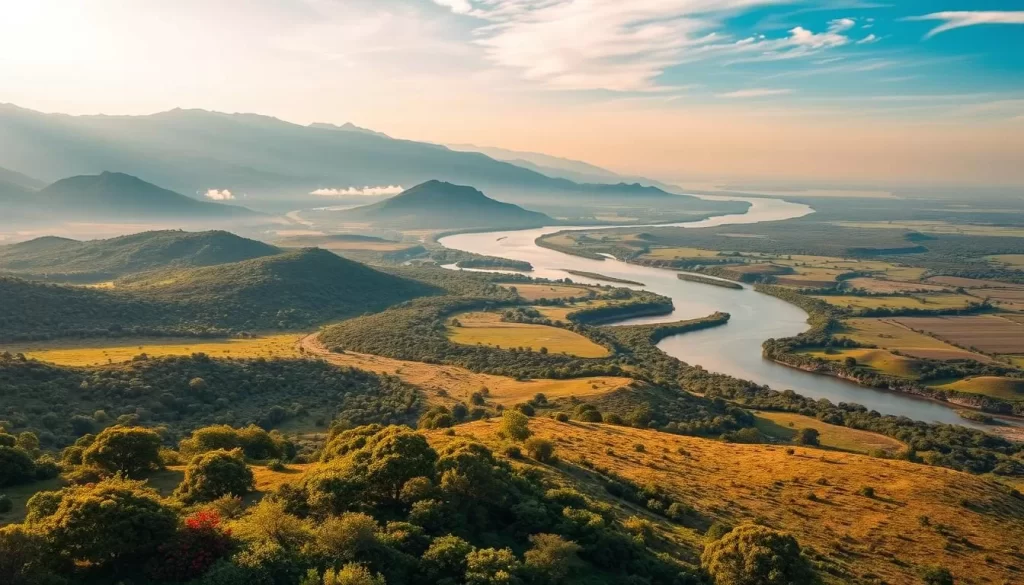
Zimbabwe: Best Months for a Weather-Savvy Trip
To make the most of your Zimbabwe adventure, it’s essential to know the best months to visit. Zimbabwe’s climate varies significantly across the year, impacting the quality of your safari experience and other activities.
May to August: Prime Safari Season
The period from May to August is considered Zimbabwe’s prime safari season. During these months, the dry landscape concentrates wildlife around limited water sources, making wildlife viewing exceptionally good. June is particularly noted as the best time for a safari due to the spectacular game viewing conditions.
The cooler dry months mean that vegetation is sparse, and animals are easier to spot against the backdrop of the golden savanna. You can expect clear skies and comfortable daytime temperatures, ideal for safari adventures in parks like Hwange and Mana Pools.
| Month | Weather Conditions | Safari Experience |
|---|---|---|
| May | Transition to dry season | Excellent game viewing |
| June | Dry and cool | Spectacular wildlife viewing |
| July | Cooler mornings and evenings | High concentration of wildlife |
| August | Dry with clear skies | Ideal for spotting wildlife |
April and September: Shoulder Season Benefits
The shoulder months of April and September offer a great balance between good weather and fewer crowds. In April, the landscape is still lush from the rainy season, providing a beautiful backdrop for your safari, while September benefits from the dry season’s wildlife concentration.
Visiting Victoria Falls during these months also has its advantages. April and May showcase the falls at their peak flow, while September allows for activities like swimming in Devil’s Pool due to the lower water levels.
![]()
Dry Season Adventures: May to October
As the dry season sets in Zimbabwe from May to October, the landscape transforms into a wildlife enthusiast’s paradise. This period offers a unique combination of adventures that make it an ideal time to visit.
Wildlife Viewing Opportunities
The dry season is renowned for its exceptional wildlife viewing opportunities. As vegetation thins out, animals congregate around permanent water sources, making them easier to spot. Hwange National Park is particularly rewarding during this time, with thousands of elephants and other game gathering around man-made waterholes.
Victoria Falls in Low Water Season
Victoria Falls presents a different experience during the dry season. With water levels decreasing, the impressive rock face and geological formations of the gorge are revealed. This is the best time for activities like white-water rafting and swimming in Devil’s Pool, offering breathtaking views of the falls.
What to Pack for Dry Season
Packing for the dry season requires preparation for significant temperature variations. You should bring lightweight, neutral-colored clothing for hot days, as well as warm layers for cold mornings and evenings. Sun protection, including wide-brimmed hats, high-SPF sunscreen, and sunglasses, is also essential.
By being prepared and knowing what to expect, you can make the most of your dry season adventure in Zimbabwe, enjoying the best that this incredible country has to offer.
Rainy Season Experiences: November to April
The Emerald Season, Zimbabwe’s rainy period, is a time of vibrant landscapes and exciting experiences. This period, spanning from November to April, brings a refreshing cooling effect for both humans and wildlife. Temperatures range between 77°F and 85°F during the day, remaining pleasant even at night.
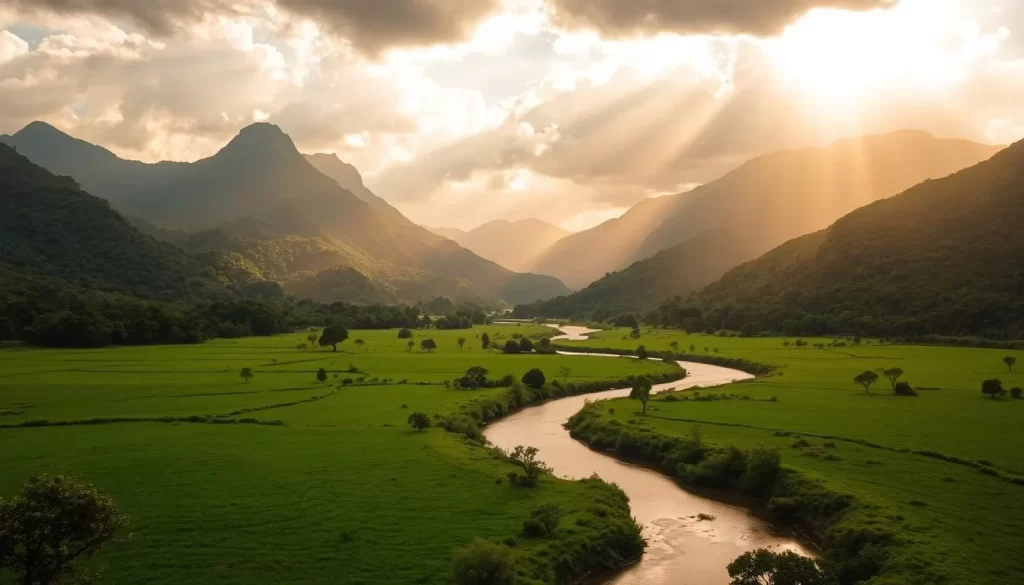
Emerald Landscapes
The country’s foliage flourishes during the rainy season, creating a special charm. The landscapes transform into a lush paradise with vibrant green hues, flowing rivers, and dramatic skies, making it a photographer’s dream setting. The Emerald Season showcases Zimbabwe at its most beautiful, with afternoon thundershowers that typically clear quickly.
Bird Watching Paradise
Bird watching reaches its peak during these months as migratory species arrive, bringing Zimbabwe’s bird count to over 600 species. Exceptional viewing opportunities are available in all national parks, making it a paradise for bird enthusiasts. The rainy season is the best time for bird watching, with lush landscapes providing ideal conditions.
Victoria Falls at Full Flow
Victoria Falls reaches its spectacular maximum flow between February and May, creating the famous “smoke that thunders” with spray visible from miles away. While the heavy spray can sometimes obscure views, a helicopter ride or microlight flight can provide a unique perspective on this natural wonder. The high water level of the Zambezi River makes Victoria Falls a breathtaking spectacle.
The rainy season offers several advantages, including lower accommodation rates and fewer visitors. Wildlife viewing requires more patience as animals disperse across the landscape, but the reward is seeing newborn animals and predators in action. With its unique charm and exciting experiences, the Emerald Season is an attractive time to visit Zimbabwe.
- The rainy season transforms Zimbabwe into a lush paradise.
- Bird watching peaks during these months with over 600 species.
- Victoria Falls is at its maximum flow between February and May.
- The Emerald Season offers lower accommodation rates and fewer visitors.
Month-by-Month Zimbabwe Travel Guide
To make the most of your Zimbabwe adventure, consider the monthly variations in weather and activities. This guide will help you navigate the best times to visit based on your preferences.
January to March: Summer Rains
January through March is characterized by Zimbabwe’s deep summer rainy season, bringing lush green landscapes and challenging wildlife viewing due to thick vegetation. However, this period offers lower rates and fewer tourists, making it an economical time to visit. You can enjoy exceptional bird watching with migratory species present, and newborn animals can be spotted across the parks.
April to June: Transition Season
As rainfall decreases and temperatures become more moderate, April to June marks a transitional period ideal for photography with clear skies and verdant scenery. May and June offer balanced conditions with comfortable temperatures and increasingly good wildlife viewing as vegetation thins. Victoria Falls still flows impressively during this time.
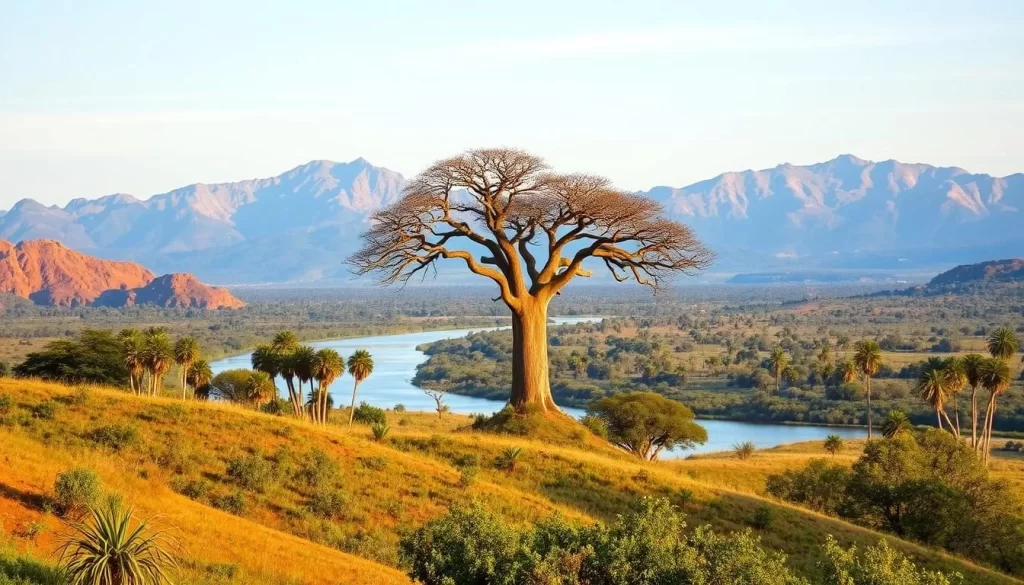
July to September: Peak Safari Season
July through September represents Zimbabwe’s peak safari season, with exceptional game viewing conditions, cool mornings and evenings, and clear, dry days perfect for photography. Hwange National Park showcases spectacular elephant concentrations around waterholes, and Mana Pools offers premier walking safaris. The annual game count in Hwange National Park is a highlight in September.
October to December: Heat and Early Rains
October brings intense heat, challenging visitors but rewarding them with dramatic wildlife concentrations as water becomes scarce. November and December see the beginning of early rains, transforming the parched landscape and bringing relief from the heat. December marks the start of the green season specials at many lodges, making it an economical time to visit.
| Month | Weather | Activities |
|---|---|---|
| January – March | Rainy Season | Bird watching, newborn animals |
| April – June | Transition to dry | Photography, comfortable temperatures |
| July – September | Dry Season | Peak safari season, game viewing |
| October – December | Heat and early rains | Wildlife concentrations, green season specials |
Top Zimbabwe Destinations and Their Best Seasons
As you plan your trip to Zimbabwe, understanding the best seasons for its top destinations is crucial. Zimbabwe offers a diverse range of experiences across its various attractions.
Victoria Falls: Timing Your Visit
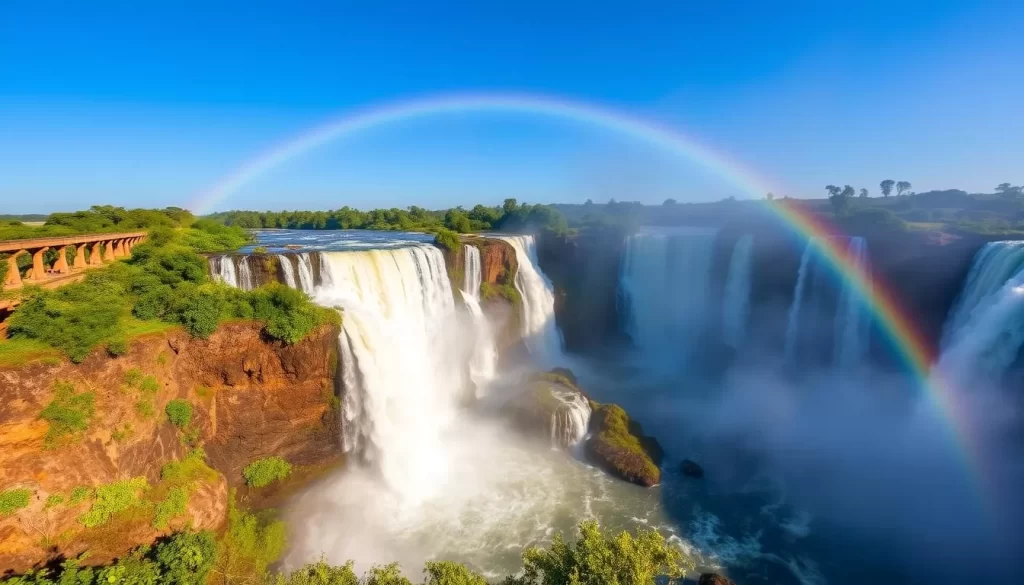
Victoria Falls is a must-visit destination, with its experience varying dramatically depending on the time of your visit. For a spectacular full-flow experience, visit between February and May.
Hwange National Park: Optimal Wildlife Viewing
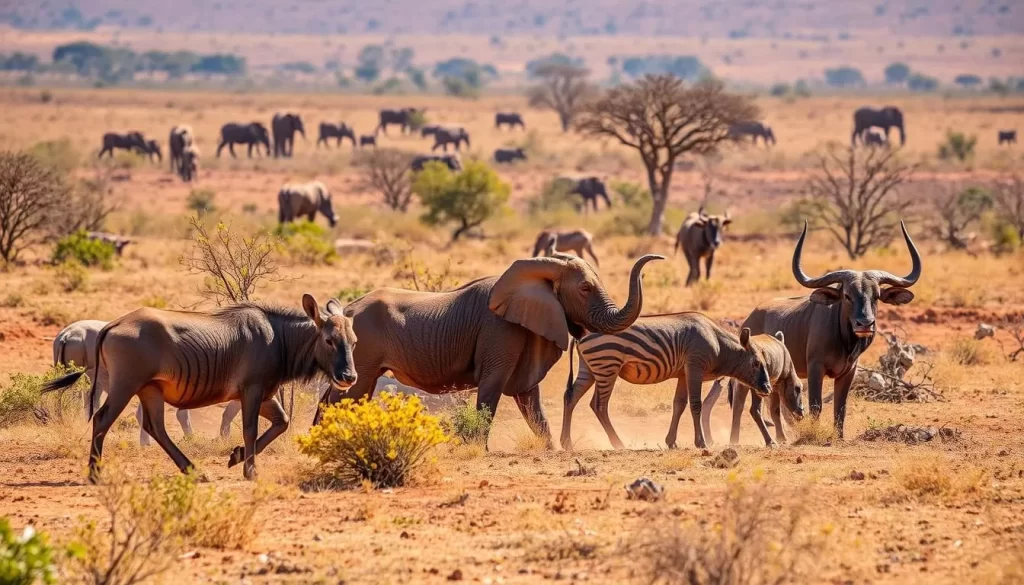
Hwange National Park offers premier wildlife viewing during the dry season, from June to October, when animals congregate around waterholes.
Mana Pools: Canoe Safaris and Game Drives
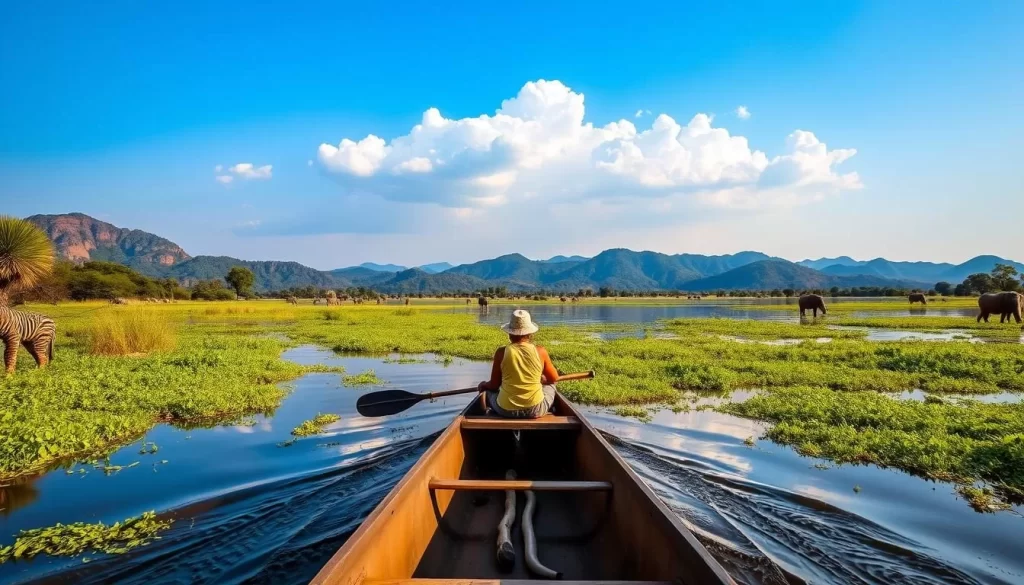
Mana Pools National Park provides an immersive wilderness experience, with the dry season (May-October) being ideal for walking safaris and canoe adventures.
Great Zimbabwe and Cultural Sites
Great Zimbabwe, a UNESCO World Heritage Site, is best visited during the mild winter months (May-August) for a comfortable exploration experience.
Understanding the best time to visit these destinations will enhance your Zimbabwe travel experience.
Planning Your Weather-Perfect Zimbabwe Adventure
To plan a weather-perfect Zimbabwe adventure, consider the best time for your safari experience. With expert guides and well-planned trip itineraries, you can enjoy game drives and witness diverse animals across various camps and destinations like Lake Kariba and Mana Pools.
The above is subject to change.
Check back often to TRAVEL.COM for the latest travel tips and deals.

